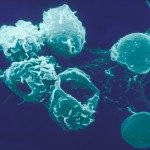Link to Pubmed [PMID] – 19785007
Stem Cells 2009 Nov;27(11):2769-80
Multiple cell types arise from cells in the dermomyotome of the somite that express Pax3 and Pax7, and myogenesis is regulated by Notch signaling. The asymmetric cell fate determinant Numb is thought to promote differentiation of skeletal muscle and other lineages by negatively regulating Notch signaling. We used transgenesis to overexpress Numb spatiotemporally in Pax3(+)/Pax7(+) somitic stem and progenitor cells in mouse embryos using a spatiotemporally regulated enhancer element from the Myf5 locus that can target muscle progenitor cells prior to cell commitment. Molecular analyses as well as examination of dermal and skeletal muscle cell fates in vivo show that although Numb is thought to be associated with muscle differentiation, unexpectedly the common stem/progenitor pool size for these lineages is increased in Numb-transgenic embryos. Prospective isolation of the relevant transgenic cells and analysis by quantitative reverse-transcription polymerase chain reaction demonstrated that, in this context, canonical Notch targets are not significantly downregulated. These findings were corroborated using a Notch reporter mouse during the formation of somites and prior to lineage segregation. Thus, we propose that Numb can regulate the self-renewal of dermal and muscle progenitors during a lineage progression.



